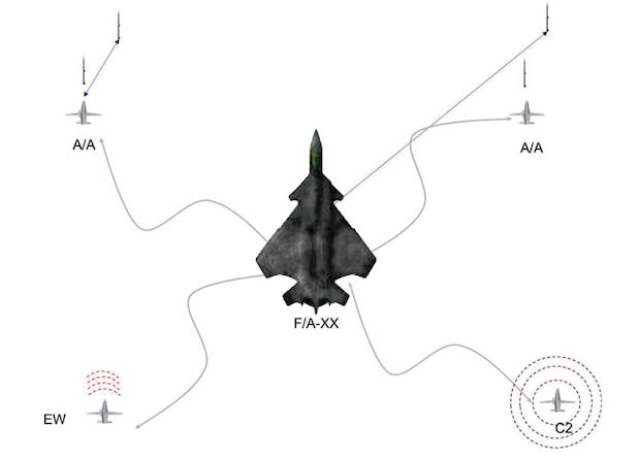The US Navy has shown the concept of a new generation fighter-bomber F/A-XX, which will replace the F/A-18E / F Super Hornet in the 2030s. The military expects him to coordinate groups of drones carrying equipment, electronic warfare equipment or serving as communication hubs.
The F/A-18 was developed in the seventies, and in the eighties they entered service with the Marine Corps and the US Navy. This family of fighters includes three generations of aircraft: the first — single and double F /A-18A and F /A-18B, the second — C and D and the third - E/F.
The US Navy is going to write off all obsolete versions of the Super Hornet, that is, A, B, C and D, by 2030. They will be replaced by updated Block III deck fighters, which Boeing is developing. Super Hornet Block III are distinguished by a radio-absorbing coating, which makes them invisible to radar stations, and a glider with a resource of ten thousand flight hours instead of six.
The F/A-XX program started at least in 2012. Its main goal was to develop a manned stealth fighter of the sixth generation. Later, the military included it in a larger project NGAD (Next Generation Air Dominance, air superiority of the new generation), involving the creation of a family of systems.
This week, the US Navy published the document "Vision of Naval Aviation, 2030-2035" with the new F/A-XX concept and other details about the program. The fighter-bomber of the new generation has almost a lambda-shaped wing and a front horizontal tail according to the "duck" scheme. His tail is probably V-shaped, although it is impossible to say for sure. Nevertheless, it is noteworthy that in almost all previous conceptual images, the F/A-XX was depicted as tailless.
The military clarified that the F/A-XX in the 2030s will replace the F/A-18E/F Super Hornet in the 2030s. The exact characteristics of the aircraft are not specified, but it is noted that it will have a higher speed and range than the Super Hornet, as well as carry weapons with a longer range. In addition, the F/A-XX will play the role of coordinator of various drones that will carry equipment, electronic warfare, serve as communication nodes and perform other functions.
The US Air Force is also conducting research on a new generation fighter program, and it is also called NGAD. Earlier we wrote that his demonstrator was secretly tested.
Vasilisa Chernyavtseva

